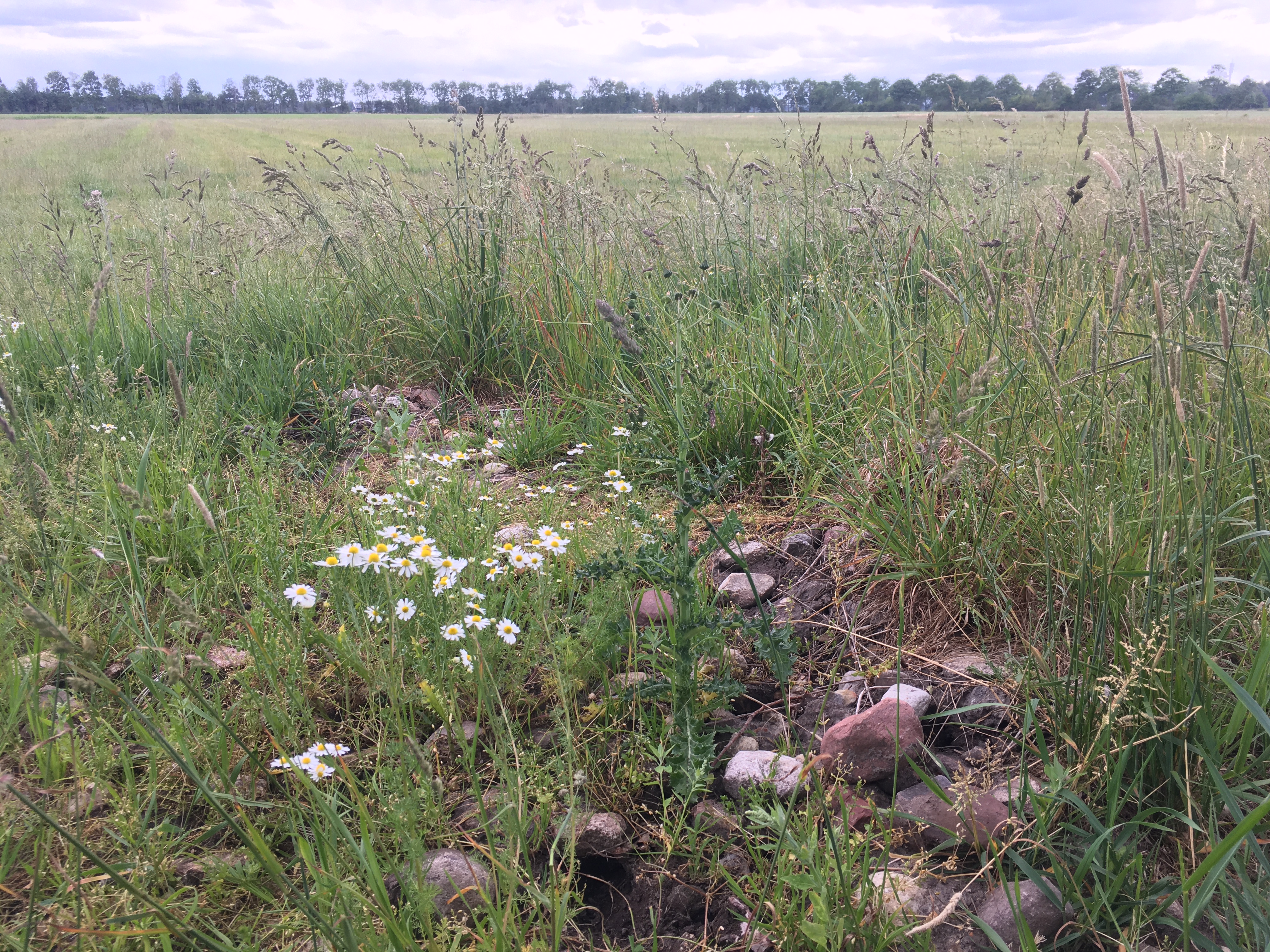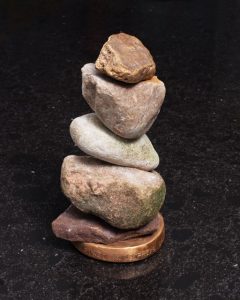This year the Piket Art Prizes awards were made by Suzie van Staaveren, a 2017 nominee in the Painting category. Suzie was happy to work on the awards during the spring months, because when the Netherlands went into lockdown in mid-March she really feared that this would be all for the summer. Two planned exhibitions were postponed until August, and one was completely cancelled.
Road markers
For the award, Suzie was inspired by the little stone ‘towers’ which in mountainous areas help you to navigate when the path seems to peter out.
“Those little stone men are more than just road markers”, she says. “They also tell you that you’re not alone, that people have been there before. The art world can be hard to navigate. The stone man is a gesture of solidarity and support. This is what I want the awards to convey.” “I asked Zahar Bondars to help me with the production of the awards”, Suzie says. “I met him at the Royal Academy and he has an oven to process bronze. I myself had never worked with bronze before.” It looks as if the little boulders have just been piled one on top of the other on a disk made of cast bronze.
In fact, the disk has a metal bar on which the stones were ‘threaded’. “I had to drill holes in all of the stones”, Suzie says, “and that was actually quite a challenge. They’re really hard and sometimes they just spontaneously fell apart.” Like the base, Suzie cast the top stone in bronze in a mould that was made from a real boulder.
The other stones are found material, which means the awards are all different. Suzie knows exactly where the stones come from. “I have an uncle who lives in the province of Drenthe and he had built a fireplace with small boulders from the land of a local farmer. He collected the stones for me and I later visited him to see where he found them and talk to the farmer. These stones have been there since the last Ice Age.”
Living wood
“I am at the moment exploring a new role for myself”, Suzie says. “I increasingly see myself as a mediator, for instance between material, process, artistic intentions, viewer, object and space.” Her use of millennia-old found material for the Piket award is very much in line with this. She has managed to make the processed and the non-processed go harmoniously together. She explains that she would like to create more work for outdoor space and involve living trees and plants. “It’s the mediator idea again. It’s only after the tree has been cut down that we have wood we can process. So I was wondering what it would be like to work with living wood.” In order to gain insight in the possibilities to do so, she applied for research subvention with art centre STROOM in April. “On a small plot of land that belongs to my family I am now developing an experimental garden, where I can try things out over a number of years and gain experience in working with plants.”
Even more important for her personal development was the discovery of a new master course at the Eindhoven Design Academy: the Geo-Design Course was started in 2019 under the direction of design duo Andrea Trimarchi and Simone Farresin of Formafantasma. The course focuses on use of material, the ecological aspects of design, and the relationship between design, tradition and local culture. These are all issues Suzie feels strongly about. In Australia she has been working with an arborist who researches and reports about areas destroyed by forest fires. Here she was introduced to the criteria that determine whether a tree lives on or, in Suzie’s words, “becomes material”. She is also increasingly fascinated by artisanal woodwork techniques, for instance the joints and constructions of traditional Japanese architecture. Suzie has already found a place to live in Eindhoven and is visibly looking forward to this new step.
Getting to know the visitor
But for the time being Suzie is still in The Hague. At studio complex Billytown, where she has her studio, she is working on the exhibition Kifle the Kid Salon with Jan Dirk Adams, a former fellow student at the Royal Academy of Art. They are converting Billytown’s exhibition space into a café/salon. “Exhibition rooms are often white and empty. It’s not that I’m against that per se, but it can turn the visitor into an anonymous figure. By changing the function of the room, we hope to also change the interaction between the objects and the viewer and in this way to find out more about the visitor.” And again, this is in line with Suzie’s new role of mediator, in this case between the wishes and expectations of the visitor and the exhibition space. “We hope to bring about a dialogue and open up the idea of authorship. This can sometimes result in the loss of the artist’s individual signature, but I don’t mind that.” From mid-August the exhibition is open on an event basis, and from 1 September Thursday through Saturday between 1 and 6 pm. “Anyone who is interested to organize an event, public or otherwise, in Kifle the Kid Salon should feel free to approach us. On the basis of the character of the event we develop scripts for performative interventions.” In addition, Suzie is taking part in the group exhibition Achtung! Spielplatz!, until 2 August at De Vishal gallery in Haarlem.
Text: Anna Beerens, foto’s Lou-Lou and Suzie van Staaveren
Photo bovenaan artikel: Hessel Waalewijn
Video: Taco Zwaanswijk (StainlessMedia) and Hessel Waalewijn





